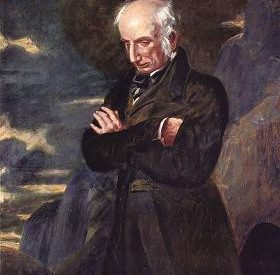 Tintern Abbey, in the Wye Valley on the England-Wales border, by Frederick Calbert, 1815
Tintern Abbey, in the Wye Valley on the England-Wales border, by Frederick Calbert, 1815
April 7, 2020, marks the 250th anniversary of the birth of the great English poet William Wordsworth, and April 23, the 170th anniversary of his death. He and his friend Samuel Taylor Coleridge were instrumental in launching the Romantic period of English literature
In 1797, William Wordsworth and his sister Dorothy moved to Alfoxden House in the Quantock Hills of north-west Somerset so as to be near the home of Samuel Taylor Coleridge, who was living just a few miles away in the village of Nether Stowey.
Together, Wordsworth and Coleridge, then 28 and 26 years old respectively (with, it must be said, insights from Dorothy) produced Lyrical Ballads with a few other poems, to give the full 1798 title, the key work which gave birth to the English Romantic movement and was to change everything, in literature, art and politics ? which is why it?s the main Wordsworthian subject in this essay.
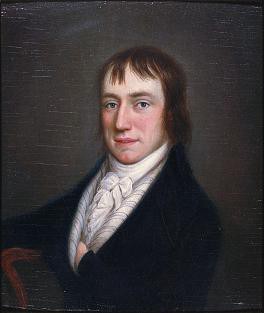 Wordsworth at 28 by William Shuter
Wordsworth at 28 by William Shuter
The book was published anonymously which, although not unusual for such works at the time, was at the insistence of Wordsworth who appeared to be in two minds about publication. Anonymity would give the impression of a single author with a unity of purpose. But another reason came from Coleridge who suggested sardonically: ?Wordsworth?s name is nothing ? to a large number of persons mine stinks.?
Most of the poems in Lyrical Ballads were written by Wordsworth: nineteen, to just four by Coleridge (1772?1834). Somewhat unromantically, Wordsworth admitted, perhaps disingenuously, that he wrote the poems ?for money and money alone? (in a letter to the Bristol bookseller and publisher Joseph Cottle late in 1798).
Two now famous poems, Wordsworth?s ?Lines written a few miles above Tintern Abbey? (on a walking tour of the Wye Valley) and Coleridge?s ?The Rime of the Ancient Mariner? were included, respectively closing and opening the volume, a turning point in the history of literature arising, as it did, out of a desire to revolutionise English poetry.
It was a small book with a big influence. It opened the way for writers to practise their art with new freedoms, to write about the human heart with power, passion and directness of language, evolving the conviction that the individual took precedence over everything else. This was the essence, over time, of its cultural impact.
In chapter 14 of his Biographia Literaria (1817), Coleridge explained that, for Lyrical Ballads, he was to write about ?persons and characters supernatural, or at least romantic?, while Wordsworth was to ?give the charm of novelty to things of every day, and to excite a feeling analogous to the supernatural, by awakening the mind?s attention to the lethargy of custom, and directing it to the loveliness and the wonders of the world before us?.
 Coleridge by James Northcote
Coleridge by James Northcote
Never did Wordsworth recapture the same stark beauty, simplicity and evocation of elemental forces of so many of the poems in the 1798 edition of Lyrical Ballads, or their concentrated intensity of vision.
?The majority of the following poems are to be considered as experiments,? Wordsworth wrote in the book?s ?Advertisement? (preface), and the experimentation evidently had been concluded, for it was never repeated.
It was not just the use of language that was new but also the interest Lyrical Ballads took in people and how they dealt with pain and loss, and it?s this that continues to engage readers with Wordsworth?s early poems today. They remain ?modern? to us. The same aspects that precluded the serious attention of some critics in the early 1800s appeal to us unproblematically in the twenty-first century.
A new preface
A second edition with the shortened title of Lyrical Ballads with other poems, published in two volumes in 1800, had Wordsworth alone named as the author on the title page, and included a new preface by him which was to be revised significantly for the next edition of 1802.
There was a different stylistic approach in his new poems which he added to the 1800 edition; already his writing was becoming more complex and accomplished, more sophisticated in its execution.
The first edition had opened with ?The Rime of the Ancient Mariner?, but in the second edition, which was much different in character from the original publication, the poem was moved to the penultimate position in the first volume and retitled ?The Ancient Mariner, a poet?s reverie?. Faced with widespread criticism of the poem?s language and perceived inaccessibility, Coleridge made revisions, including the changing of archaic spellings, at Wordsworth?s instigation.
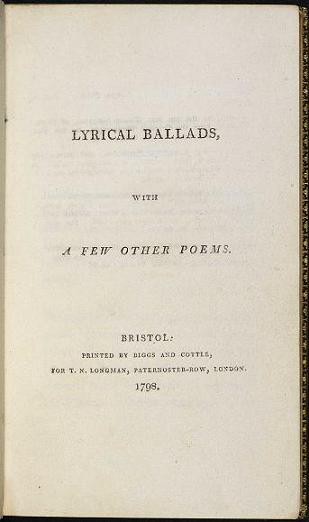 The 1798 edition
The 1798 edition
In the preface, Wordsworth acknowledged Coleridge?s contribution; poems by ?a Friend? are presented as having been included ?for the sake of variety?. The change of order of the poems, and Wordsworth being credited as author, were done with Coleridge?s knowledge and probably some support, as it might have been that he felt unable to keep pace with his older friend?s creativity.
Wordsworth says in a note to the ?Ancient Mariner? that he requested Coleridge to keep the poem in the collection despite its ?great defects?. In a letter to Joseph Cottle in the spring of 1799, Wordsworth said he felt the poem?s ?strangeness? had deterred readers of the first edition of Lyrical Ballads.
It?s unlikely that Coleridge knew of the note?s harsh criticism before publication. Wordsworth removed his comments from later editions of the book, but we know from Coleridge?s letters that they led to him losing confidence as a poet and, significantly, to the deterioration of the friendship between the two men.
The ?Ancient Mariner? was not published under Coleridge?s name until 1817 (in Sybylline Leaves) by which time he had made more changes to it.
Some scholars view the preface as an important work of Romantic literary theory. Wordsworth discusses what he sees as the elements of a new type of verse, and how he has endeavoured ?to bring my language near to the real language of men?. Both he and Coleridge reacted against the high-flown and artificial poetic diction of much 18th-century verse and set out consciously to avoid it.
Wordsworth also gives his famous definition of good poetry as ?the spontaneous overflow of powerful feelings: it takes its origin from emotion recollected in tranquillity?. Indeed, for Wordsworth, feelings and ideas are deemed more important than the stories which are told in his poems, allowing us to understand why the collection has the apparently oxymoronic title Lyrical Ballads, and not just ?Ballads?.
If one is to assess how early Romantic preoccupations are played out in Lyrical Ballads ? a fourth and final edition was published in 1805 ? one must first be aware of the combination of the traditional and the innovative, and that Wordsworth and Coleridge were creating an essentially hybrid genre which was the challenge to the readers of their day.
Encountering tradition
For Wordsworth was at once encountering tradition and freeing himself from it, to achieve a permanently enduring poetry of his own.
The subjects and sentiments of most of the poems in the 1798 edition of Lyrical Ballads actually did reflect popular tastes and attitudes and, in themselves, would not really have seemed anomalous or outlandish to contemporary readers: ?a natural delineation of human passions, human characters and human incidents? (Advertisement, 1798).
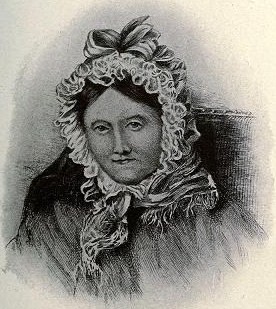 Dorothy Wordsworth (1771?1855) in middle age
Dorothy Wordsworth (1771?1855) in middle age
Moreover, before the appearance of Lyrical Ballads, there were already signs of ?Romantic preoccupations? in contemporary verse upon which Wordsworth and Coleridge were able to build, for example, in the works of Thomas Gray (1716?71), Thomas Chatterton (1752?70) and Joseph Warton (1722?1800).
What else was ?in the air?, so to speak, to bring about a new way of looking at the world? What was Wordsworth?s cultural ?antennae? picking up? It?s instructive to consider the philosophical background.
For the Romantics, imagination was fundamental and part of a new belief in the individual and in the experience of an extended freedom from rules and conventional forms, together with intense and (especially) authentic feeling, all linked with new notions of subjectivity, of the self.
Romantic theories of the imagination, celebrating the liberation of image from the grip of reason, came to be formulated as a result of the philosophy of Immanuel Kant (1724?1804), after which psychic images could no longer be denied a central place in modern theories of art, existence, knowledge and psychology.
For Kant had proclaimed the process of imaging to be the indispensable precondition of all knowledge. In his Critique of Pure Reason (1781), he demonstrated that both reason and sensation ? the two primary terms in most theories of knowledge up to the late eighteenth century ? were produced, not reproduced, by imaging.
Mental image ceased to be viewed as a copy, or a copy of a copy, and assumed the role of ultimate origin and creator of meaning and of our sense of existence and reality. The act of imaging creates our consciousness which then provides the illumination of our world.
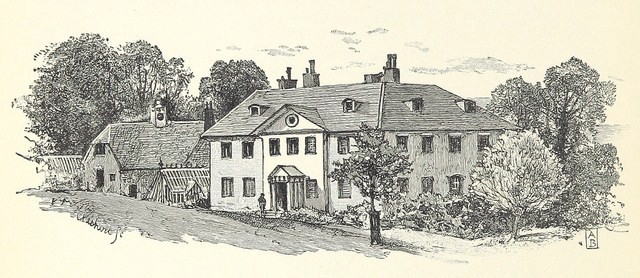 Alfoxden House, Holford, Somerset, rented by Wordsworth and his sister Dorothy 1797-98
Alfoxden House, Holford, Somerset, rented by Wordsworth and his sister Dorothy 1797-98
The works of Wordsworth and Coleridge, the latter being significantly influenced by Kant, best illustrate my understanding of Romantic theories of the imagination which derive from this line of thought. In the eighteenth century, imagination was not an important aspect of poetical theory. ?Fancy? was approved of, as long as it was controlled by ?judgement?, and poets such as Dryden, Pope and Johnson were more interpreters than creators.
Wordsworth believed the world was alive and had its own soul but that it took the imagination to communicate with it. He was aware that creation alone was not enough, that it must be accompanied by a special insight ? inspired insight being itself rational for Wordsworth who did not go as far as other Romantics in placing reason in an inferior position.
Visionary insight
He thought the combination of imaginative, creative power and special visionary insight led to an activity resembling that of God and, repeatedly, he saw the issue illustrated in and by childhood, as exemplified in the famous ?Ode: Intimations of Immortality from Recollections of Early Childhood? and passages of The Prelude, which I?ll touch on later.
By the time Lyrical Ballads was published, both Wordsworth and Coleridge had rejected the philosophy of William Godwin (1756?1836) in favour of that of David Hartley (1705?57), although Coleridge was soon to abandon Hartley also ? a move which led to a major disagreement between the two poets as Wordsworth went on to emphasise his indebtedness to Hartley?s psychology in the preface to the 1800 edition of Lyrical Ballads.
Godwin?s utopian radicalism was initially attractive to Wordsworth and Coleridge, both in the early 20s at the time. Godwin?s view was founded on the claim that human beings are naturally equal, and his optimistic faith in reason led him to an equally optimistic view of human moral capacity.
Depressed following a visit to France and the break with his lover Annette Villon, and disillusioned with the French Revolution, Wordsworth was taken by Godwin?s belief in the efficiency of reason unimpeded by the emotions. But Wordsworth came to see that his recovery from emotional collapse had had little to do with rational control and more to do with environment at tranquil Alfoxden in the company of Dorothy and Coleridge.
Finding an explanation for his process of recovery in Hartley?s ideas, Wordsworth wrote two poems for Lyrical Ballads which signified the rejection of Godwin: ?Expostulation and Reply? and ?The Tables Turned?. In the former, Wordsworth tells of the healing power of nature: ??we can feed this mind of ours / In a wise passiveness.?
In the latter, he spurns the ?sages? and ?meddling intellect?, and urges ?Let Nature be your teacher?, warning that ?We murder to dissect?, and expressing a disenchantment with the ?barren leaves? of books.
Hartley?s interest was in the body?s role in the production and association of ideas, having found the key in Newton?s theory of vibrations. Hartley put the emphasis on environment, while Godwin had put it on reason. Hartley saw the mind as passive, a tabula rasa on which the external world wrote its impressions via the senses, to be received by that ?wise passiveness? of which Wordsworth wrote.
Sensation was the basis of all knowledge, including moral principles ? morality was the product of experience, accrued from the effects of the environment on personal development. This is of major importance in Wordsworth?s poetry in Lyrical Ballads, but of much less significance in Coleridge?s contributions.
 Coleridge?s cottage at Nether Stowey, Somerset
Coleridge?s cottage at Nether Stowey, Somerset
It could be that the outline of ?Tintern Abbey? was drawn from Hartley; on the foundation of the ?language of the sense? ? the language by which we name things via our sense impressions ? is built the language of the intellect and of morality; the empiricist belief that the basis of abstract ideas lies in concrete experience.
Wordsworth feels that the ideas of nature and the language of sensible impressions, provide the ?springboard? for intellection and moral considerations. Without them he could have no ?lofty thoughts? or moral purpose, and so he is able to explain and justify his own worship of nature.
Association of ideas
Thus exemplified is the Hartlean association of ideas ? the tendency of ideas which have occurred together, or in immediate succession, to recall one another. In his 1800 preface, Wordsworth says that his ?principal object? in the poems is to make incidents of common life interesting by tracing in them ?the manner in which we associate ideas in a state of excitement?.
Of course, the attempt has been made within post-structuralist theory, notably that of Barthes and Derrida, to subvert the humanistic approach to literary works which takes account of biographical information about authors and poets. For Barthes, authors are produced by literature rather than the other way round, and Derrida sees biography as just another text to deconstruct in an infinite regress of semantic and semiotic obfuscation.
In this way, the works of Godwin and Hartley, and of Wordsworth and Coleridge, are merely ?books talking to books?, texts in a kind of never-ending freefall through layers of literary, social, historical, political and ideological influences where meaning is indeterminate and the individual is decentred, if not deactivated altogether.
Despite these views, it?s my contention that an individual consciousness still lies behind the production of a literary work (or philosophical tract) and shapes the influences on it in the process of composition. It is, after all, fundamentally, consciousness that endows the world with meaning.
Without knowledge of the philosophical background to the early life of Wordsworth, the understanding of the poems in Lyrical Ballads lacks an important, if not vital, dimension. For example, one would not grasp the full significance of such terms and phrases as ?associate?, ?language of the sense?, ?passiveness?, and ?nature?; and one would lack proper explanation of many of the attitudes and ideas, even themes, found in the poems, such as the foundations of Wordsworth?s ?moral being?.
Turning to Romanticism generally, there were new valuations of the ?irrational?, the ?unconscious? and the ?legendary?, or mythical, which developed alongside new appraisals of folk cultures within which some of these qualities could be detected. There was overlap between new and older senses of the term ?Romantic?: now there was a general philosophical basis for what were formerly regarded as specific and separable characteristics.
Other key Romantic concerns included nature, dreams, the supernatural, compassionate politics and the human condition, especially where this gave rise to sensibility to the suffering of the poor. All these elements can be found in Lyrical Ballads.
Most of the poems follow the superstitions of minds traduced in their deepest sense of justice. They portray the sufferings of minds tragically forestalled just as they might have been ready to reach out in love, or were at a crucial point where they might have realised their hopes and desires, had not the forces of fate intervened to destroy them.
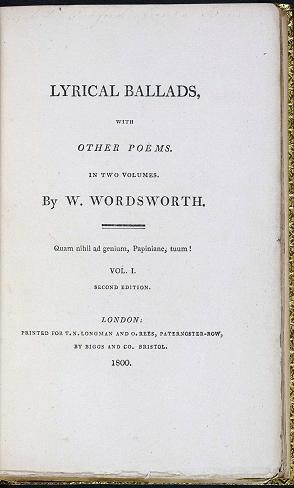 The 1800 edition
The 1800 edition
Across the 1798 and 1800 editions of Lyrical Ballads, the female vagrant, Martha Ray in ?The Thorn?, the sheep farmer in ?The Last of the Flock?, Leonard in ?The Brothers?, Ruth and Michael are all examples of this situation.
If there is one major issue linking the works of Wordsworth and Coleridge at this juncture (and William Blake, 1757?1827, before them), it is the mystery in the human condition of the opposing states of joy and dereliction in the soul, or psyche, and the enantiodromia in which one condition is converted into its opposite. It is explored in psychological, social and inter-personal terms.
Message of healing
Why does human consciousness embrace such extremes, at times rejoicing in a world radiant with the Divine and at others plunged in a pit of despair and even horror? Wordsworth and Coleridge have an urgent message of healing that might lead to the repair of this rift, although they fear in their hearts that their prophecy will go unheeded, that their ?oracle? will be shunned, ridiculed or simply ignored.
This timeless message is presented most strongly in Lyrical Ballads in the poets? relationship to nature: ?One impulse from a vernal wood? (?The Tables Turned?) can teach us more about man and morality than all the sages, Wordsworth writes. Today, with widespread concerns about environmental degradation, the message surely comes with a renewed and special urgency.
In ?Tintern Abbey?, Wordsworth realises that the relevance of Nature to the human heart and mind is profound, that the foundations of his moral being lie ?in nature and the language of the sense?, that the joys of nature might not be regarded objectively as simply a bulwark against the mundane world, but subjectively, as promoting a healing power and psychic wholeness capable of discerning the ?still, sad music of humanity?.
It is fitting that ?Tintern Abbey? should close the first edition of Lyrical Ballads (and the first volume of the second edition) because it deals with the principles on which many of the preceding poems are founded. They facilitate a rediscovery of the self through its impression on nature, and vice versa, through nature?s impression on it.
In ?The Rime of the Ancient Mariner?, with its strong supernatural and ?irrational? overtones, the Mariner offends nature by killing the albatross and is only partly redeemed, destined to roam the world, an outcast, at the mercy of anguish and guilt which always return to plague him, but bringing the dire warning of his tale to those who will listen.
Coleridge, perhaps, is suggesting that humankind, like the Mariner, is trapped in a pattern of agony and ecstasy and only reunification with nature, or at least, for us today, realisation of the oneness of human life and consciousness with the universe, will bring salvation.
In ?The Nightingale?, Coleridge challenges the notion that the song of the nightingale is melancholy (after Milton). Poets would be better experiencing nature first hand than ?building up the rhyme?. He and Wordsworth have learned differently: they cannot profane ?nature?s sweet voices always full of love and joyance?.
Romantic poets, being compassionate about the poor, are sceptical of political power and religious influence. ?The Female Vagrant? is a protest against ?what man has made of man? as seen in the horrors of war and the miseries of the poorer classes. The central character?s joy in a simple, rustic lifestyle is turned to despair when the ?master? begins buying up the cottagers lands, and she and her father are eventually forced out.
In this poem, as in ?Michael, a Pastoral?, where a father?s dreams are dashed when his son falls foul of the ?dissolute city?, the growing influence of laissez faire capitalism, together with urban expansion, is depicted by Wordsworth as adversely affecting the lives of the rural poor in whom he perceived certain attributes in relation to their lack of sophistication, including honest emotion and an elemental simplicity of feeling, about which he remarks in his preface.
Coleridge?s ?The Dungeon? and Wordsworth?s ?The Convict? (omitted in the 1800 edition) question, ahead of their time, the social efficacy of imprisonment, proposing exposure to nature?s ?benignant touch of love and beauty? as the antidote to miscreant tendencies.
Important new avenues
In the playing out of early Romantic thought, especially in the 1798 and 1800 editions of Lyrical Ballads, where the keynote most certainly is intensity and imagination the watchword, Wordsworth and Coleridge opened up important new avenues for self-expression in English poetry.
However, after Lyrical Ballads, Coleridge?s career as a poet soon went into decline and, by the time Wordsworth entered his 40s in the second decade of the nineteenth century, he had lost his visionary and revolutionary power and was on the path to becoming an establishment figure with an increasingly conservative outlook.
In 1813 he took up the post of Distributor of Stamps for Westmoreland and the Penrith district of Cumberland (not postage stamps, first issued in 1840, but revenue stamps used in legal transactions). It was his first ever paid employment, obtained with the help of Lord Lonsdale, to whom he had appealed because he wasn?t making enough money from his writing, and the Prime Minister Lord Liverpool.
Wordsworth received criticism in his own time from those who saw him as ?selling out? to the government purse at the price of his independence. Wordsworth ?has chosen to live like a hermit and prefer a Government salary and the luxuries of poetical meditation?, wrote the critic and poet Leigh Hunt in 1831.
While Coleridge, after Lyrical Ballads, went on to provide a cogent analysis, as a prose writer, of the poetic imagination and its relation to rationality, Wordsworth struggled to articulate his visionary experience.
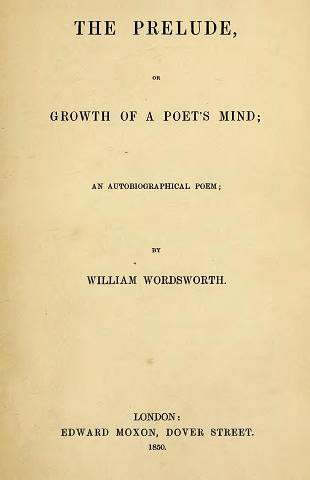 The 1850 edition
The 1850 edition
Early in their relationship, Coleridge had long urged Wordsworth to write a lengthy and comprehensive philosophical poem, and an autobiographical work in blank verse, provisionally titled ?Poem to Coleridge?, was begun by Wordsworth in 1798?99 and a complete draft of thirteen ?books? was arrived at in 1805.
Eventually, after being reworked several times, and with the number of books increased to fourteen, this became The Prelude, Wordsworth?s magnificent achievement, the poem on the growth of his own mind as a poet, notwithstanding the toning down of some of his early political opinions. Originally, it was conceived as an introduction to The Recluse, an epic work which Wordsworth planned but never finished.
As it turned out, The Prelude was not the long philosophical poem for which Coleridge had hoped, but rather Wordsworth?s exploration of his ability to write it.
Ironically, it was not published until after his death ? it was Wordsworth?s long-kept secret, a work which, if it had been published before, surely would have influenced and reshaped the Romantic ethos profoundly during the first half of the nineteenth century.
?Tintern Abbey? foreshadowed, in much condensed form, the substance of The Prelude, while the ?Immortality Ode? (written 1802?6, published 1807), again affirmatory of the healing power of nature, distilled as experience the wisdom of the greater work.
But it was as if, with the Ode, less intellectually assured in its attempt to find ?strength in what remains behind?, the ?visionary gleam? was already fading, which, for Wordsworth, sadly, it was.
 ?Wordsworth on Helvellyn? by Benjamin Robert Haydon
?Wordsworth on Helvellyn? by Benjamin Robert Haydon
